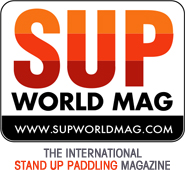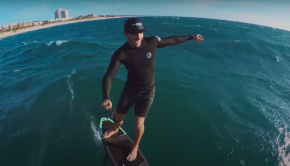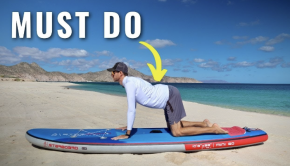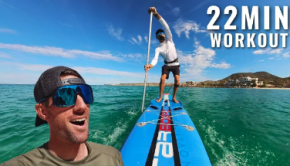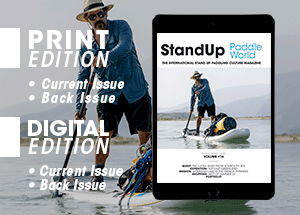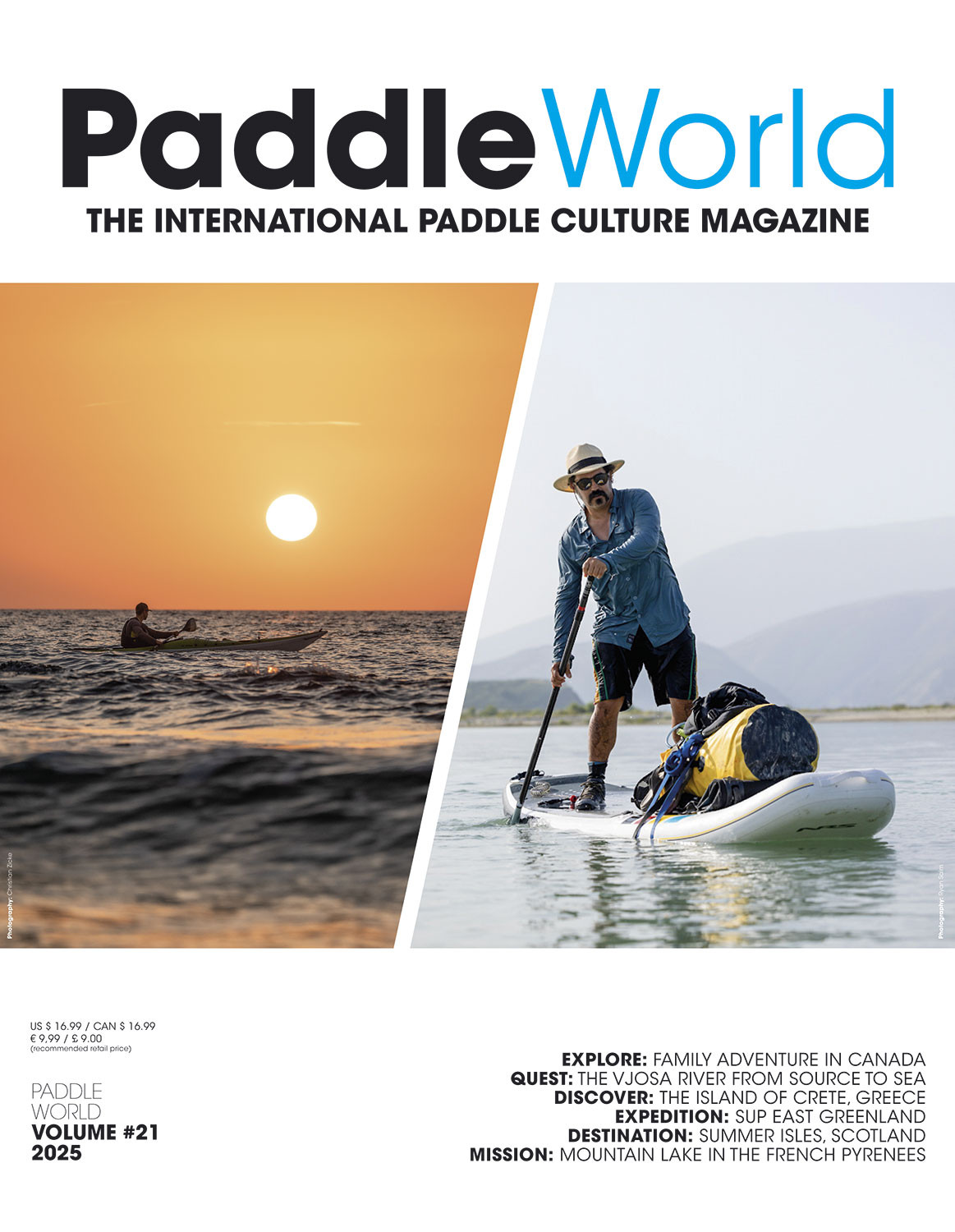Downwinder Sessions – Riding the Swell for Fun and Fitness
When stand up paddling was resurrected from its ancient Hawaiian roots by surf legends like Laird Hamilton and Dave Kalama, it happened in an unlikely place – Maui. Of all the Hawaiian Islands, Maui is by far the windiest due to the current trade flow that cranks up its north shore to a whopping 25+ knot winds on regular basis. Maui’s south side is not much better, with hard offshore winds at famously windy spots like Ma’alea. But Laird and Dave figured out early on how to use the wind to their advantage and when stand up paddling began its rise in popularity it wasn’t uncommon to see them paddling downwind from Ho’okipa to Kanaha Beach with the goal of hitting every surf spot along the way.
The concept of launching in one place and ending up in another is not new; it is central to sports like whitewater kayaking, rafting and downhill biking to name just a few. Sometimes, the most fun comes from finding the fastest way to get from A to B. It wasn’t long before more people caught on to the idea of using wind and swells to move along the shoreline. Paddling ‘downwinders’ soon became a popular SUP activity and downwinders today haven’t changed much since those early days.
The classic downwind run on Maui is a lot like a day of whitewater paddling: riders head up the coast in an organized shuttle service (or are driven by parents, spouses or friends) to Maliko Gulch and then paddle downwind towards any number of destinations down the coast, with the most famous being Kanaha Beach Park.
Prevailing winds blow side shore on Maui, so a paddler can go at his or her own pace (from racing to drifting) while the wind and open ocean swell does most of the work. Experienced paddlers will notice a strong similarity to the sport of surfing as they pick up wind swells and connect them with each other. Often the fastest downwind paddler is not necessarily the strongest but the one who reads the wind swells and rides them with the most skill. Experts are the ones who are able to get their boards up on a plane and keep them at that speed for longer distances by connecting the «glides’’ from swell to swell – a skill that makes Hawaii’s paddlers outstanding watermen in open ocean conditions.
Besides Maui’s classic Maliko Run, Hawaii offers a variety of these classic downwind conditions including the Maui to Molokai downwinder, Oahu’s Hawaii Kai run which heads from Hawaii Kai into Waikiki, not to mention more remote runs on the Big Island. The famous Molokai to Oahu (M2O) course – which is considered the un-official world championship for prone paddleboarders and stand up paddlers alike – is one of the most challenging downwind paddles in the world by far. This 32-mile race through the Kaiwi Channel is treacherous, filled with big swells and unpredictable currents. Racers from across the globe travel to Hawaii to compete in the M2O every August, simply to be able to experience this exciting piece of open water. In recent years, the stand up racing scene has grown dramatically.
Downwind races like the long distance run during the Battle of the Paddle in Hawaii or the classic Naish Maliko race have become a huge attraction and draw a wide variety of participants. Some people are in it to win it and some are simply recreational paddlers who enjoy the fact that a downwind race gives them the option to ‘‘cruise’’ if they choose. No matter what, every paddler ends up at the finish line downwind – which makes it a less grueling experience than flat water competitions that require the racer to paddle hard in order to finish. Recently, Maui has experienced a strong trend towards non-competitive events and it is now common to see groups of people out paddling social ‘‘downwinders’’ together. To improve their fitness or to simply enjoy time on the water, newcomers and experienced paddlers alike find downwinders an perfect way to spend an hour or a day. Some companies have even begun to provide a group shuttle service to Maliko Gulch, offering paddlers a more eco-friendly shuttle alternative. It eliminates a lot of back and forth driving and saves time – making it possible for people to go on runs even during their lunch break. Maui and Oahu may have been the original ‘‘downwind’’ capitals, but more locations with similar conditions are making it onto the SUP map every year. Most of them are incredibly scenic and are a great experience on any level.
The Columbia Gorge, which forms the border between Oregon and Washington near Hood River, OR, is one of the newcomers, providing strong winds and resulting wind swell during the summer months. On most days, the wind actually blows against the current, which may bring board speed down but creates steeper windchop waves for longer glides.
Another popular spot is Lake Garda in Italy, which offers a car-free downwinder solution: The steep rock walls surrounding the lake, in combination with its unique geographical orientation—high mountains to the north and a much flatter warmer area to the south—create two main thermal winds that blow in opposite directions at different times of the day. The beauty of this is that a paddler is able to ride downwind from north to south in the morning, have lunch and enjoy the breathtaking landscape, then once rested head downwind again from south to north as the winds turn in the afternoon. Along the high cliffs, the wind accelerates even more, guaranteeing good glides all the way.
Paddlers can even put South Africa in their travel plans. During the South African summer, the Western Cape area is battered with strong winds, which blow side shore along the west coast. The unique geography of Capetown’s Table Mountain creates a great downwind run along the coast from Capetown (Milnerton) to Big Bay or even farther if you are up for adventure.
To be sure, there will be more such locations popping up on the stand up map in no time!
When examining why downwinders are so popular, there is room for different theories. Ranging from simple laziness to the never-ending global fascination with surfing, amplified by the fact that modern touring and racing stand up paddleboards allow riders to catch open ocean and wind swells easily. The learning curve for catching waves and connecting glides is very quick and on windy runs, this allows riders to plane for long distances and actually steer the boards sideways, riding swells like shore-breaking waves.
The bottom line is that everybody has fun and can go at his or her own pace with the opportunity to be social or solo.
Michi Schweiger
(article published in Sup World mag 2011)
